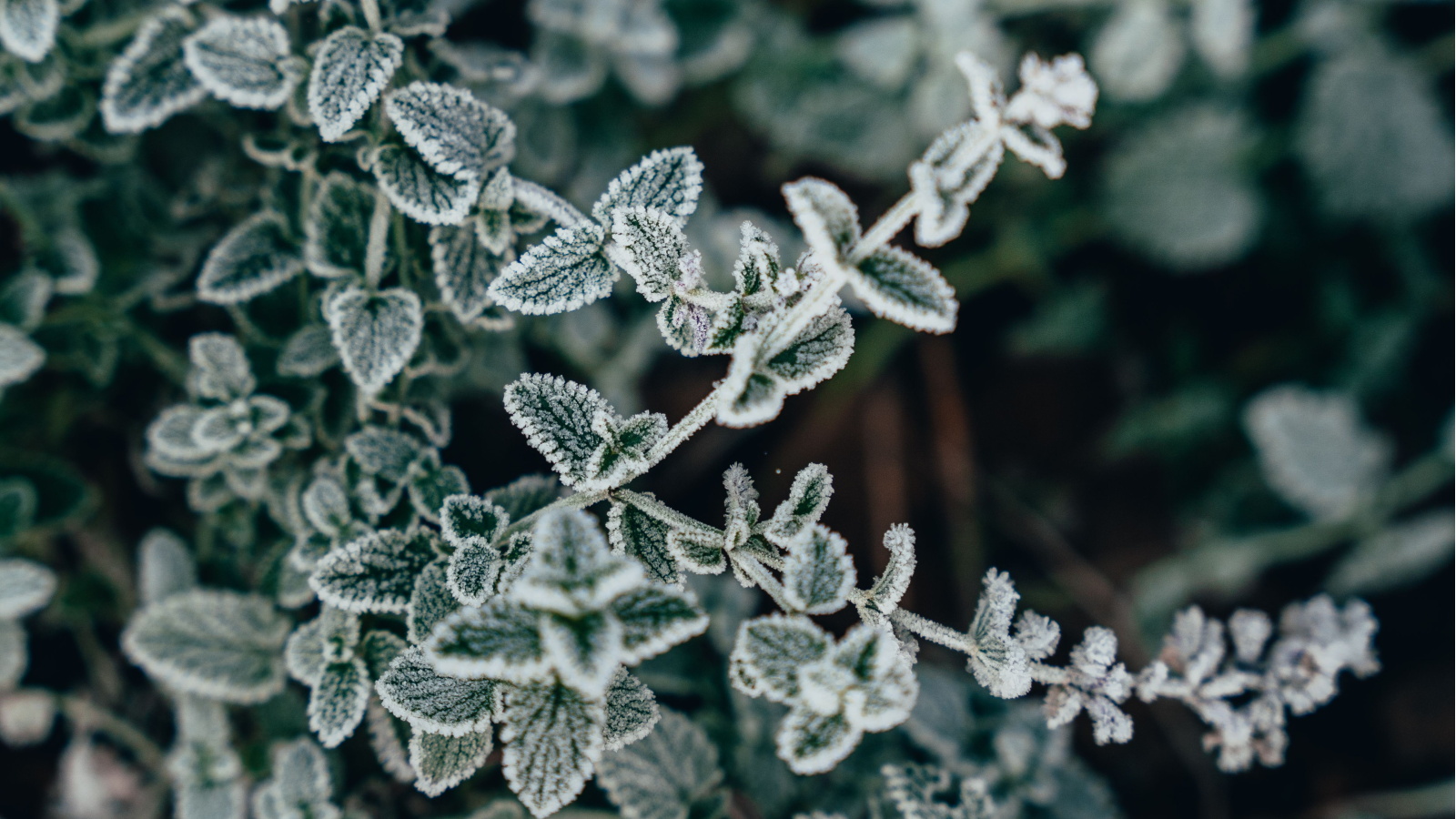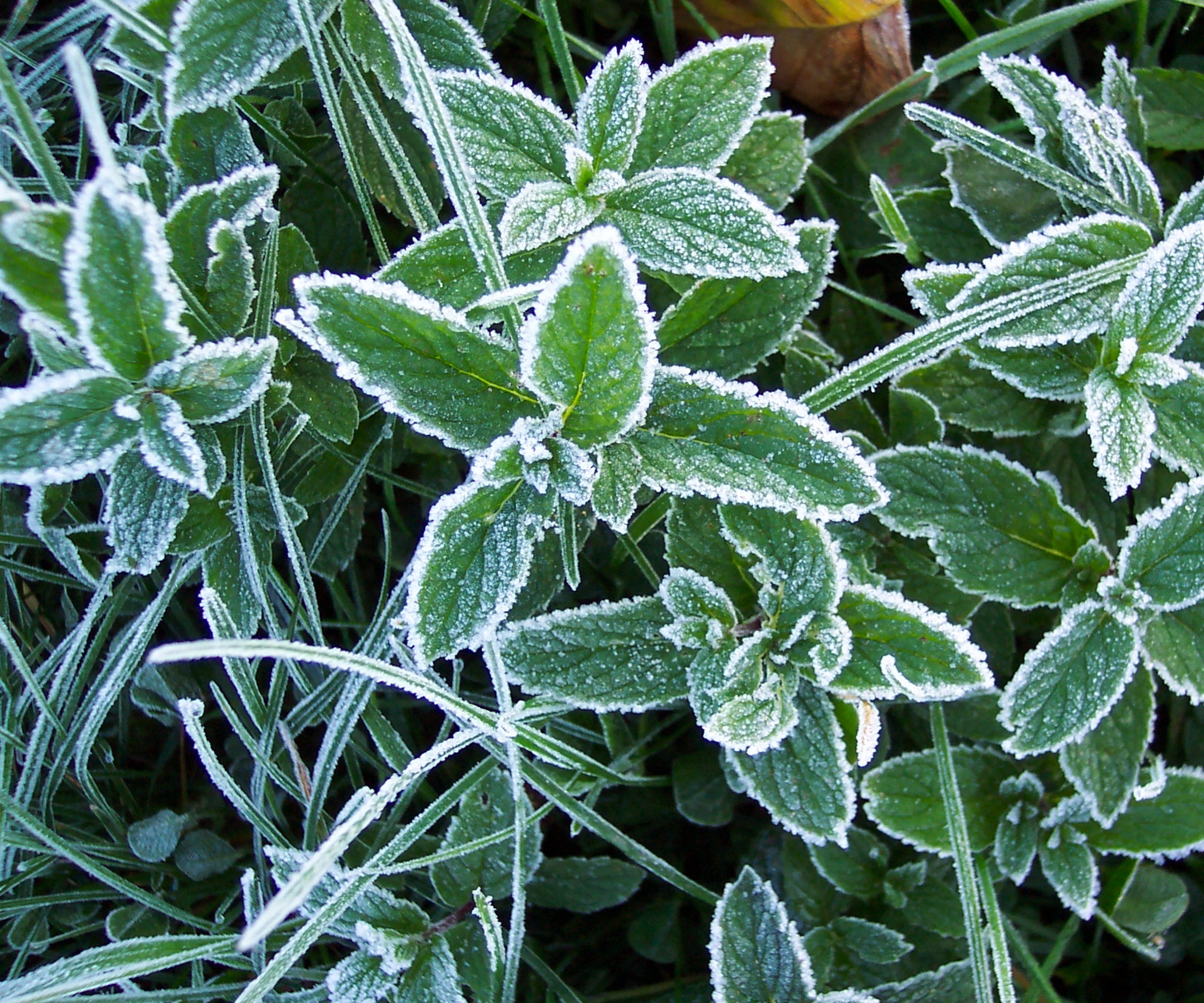Is mint frost-tolerant? Everything you need to know about growing mint in winter
You don't necessarily have to overwinter mint to keep it in a healthy condition


When you grow a wide range of plants in your yard, it can be tricky to figure out which need protecting in winter. Herbs can often be particularly difficult to judge, which might leave you questioning 'is mint frost-tolerant?'
Growing mint is fairly straightforward, so long as it receives plenty of sunlight in the warmer months. However, in the winter months, mint will stop growing as it enters a dormant season. At this point, you may be wondering if you need to protect mint from frost to get it through the coldest months.
Protecting tender plants is an important part of overwintering a garden, but those that are frost-tolerant can typically be left alone. Here, experts share whether mint is frost-tolerant, so you can take the right steps to get your mint plant through the harshest time of the year.
Is mint frost-tolerant?

You might find it surprising to learn that yes, mint tends to be frost-tolerant. It's one of the herbs that don't need winterizing and can be left alone as the freezing temperatures settle in.
Mint is a perennial plant, meaning it will dieback during the frosty season before putting on new growth in spring. You therefore shouldn't mistake its dying back in winter as the plant being dead altogether.
'Mint is very frost-tolerant. It can grow in most zones and generally survive in temperatures as low as -20°F,' explains garden expert, Jeremy Yamaguchi, from Lawn Love.
There are lots mint varieties you can grow - whether you want to grow mint indoors or outdoors. The majority of these varieties thrive across US hardiness zone 3 to zone 11.
Design expertise in your inbox – from inspiring decorating ideas and beautiful celebrity homes to practical gardening advice and shopping round-ups.
However, just because the answer to 'is mint frost-tolerant?' is yes, doesn't mean you can expect to harvest mint during winter: 'Frost can make mint die back to the roots,' says plant nursery expert Tammy Sons.
While it isn't essential to protect these plants from frost, you could use these frost cloches from Walmart, or this frost cloth from Amazon to provide extra insulation for your mint's roots. Alternatively, you can move your mint plants into a cold frame.

Jeremy is a gardening expert who advises on a range of gardening matters. As the CEO of Lawn Love, Jeremy helps homeowners find quality, reliable lawn care.

Tammy Sons is a horticulture plant expert, garden writer, and educator. Tammy is the CEO and founder of TN Nursery, a thriving online plant nursery based in Altamont, Tennessee. She is also a prolific writer, sharing her knowledge through articles on various gardening topics, including plant care, sustainable landscaping, and the latest trends in horticulture.
FAQs
How do you keep mint productive in winter?
When mint is growing outdoors, it will typically dieback in winter before returning in spring. However, it is possible to keep mint productive during winter by growing it indoors. Ideally, you should keep your mint on a warm, sunny windowsill. You might find it beneficial to use an indoor greenhouse to provide extra insulation, too.
Why has my mint not grown back after winter?
Even though mint is frost-tolerant and it isn't an essential requirement to winterize this plant, it is possible for mint roots to become damaged by frost during particularly cold spells. In this case, the plant may be killed off and won't return when temperatures become warmer again. To prevent this, you might consider mulching to insulate the roots of your mint plant during winter.
You can get more out of your mint plant by saving mint seeds before your plant dies back for the season. Mint flowers in spring and summer, so aim to collect seeds in fall before early frosts. You can then store your seeds somewhere cool, dark, and dry until it's time for sowing seeds outdoors in spring.

Tenielle is a Gardens Content Editor at Homes & Gardens. She holds a qualification in MA Magazine Journalism and has over six years of journalistic experience. Before coming to Homes & Gardens, Tenielle was in the editorial department at the Royal Horticultural Society and worked on The Garden magazine. As our in-house houseplant expert, Tenielle writes on a range of solutions to houseplant problems, as well as other 'how to' guides, inspiring garden projects, and the latest gardening news. When she isn't writing, Tenielle can be found propagating her ever-growing collection of indoor plants, helping others overcome common houseplant pests and diseases, volunteering at a local gardening club, and attending gardening workshops, like a composting masterclass.